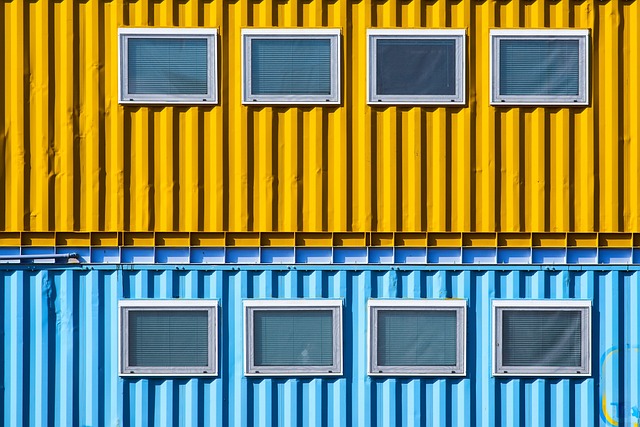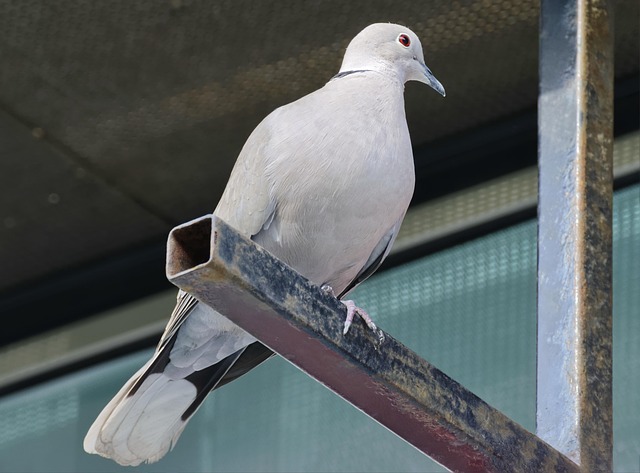Metal railings have become a popular choice for residential renovations due to their attractive designs, durability, low maintenance, and safety features. Crafted by skilled artisans, these custom railings can enhance staircases, balconies, and outdoor spaces while adhering to industry standards. Incorporating metal railings involves detailed planning, material selection, custom design, professional fabrication, and regular maintenance to ensure longevity. Regular cleaning, sealing, inspections, and prompt repairs are essential for preserving the strength and beauty of these modern architectural additions.
“Elevate your home with the timeless elegance of professional metalworking for residential renovations, focusing on metal railings. This comprehensive guide explores diverse styles and the benefits they bring to your property. From classic designs to modern aesthetics, metal railings offer both functionality and aesthetic appeal. We delve into the professional approach, highlighting craftsmanship, safety standards, and design flexibility. Learn how to seamlessly incorporate these features into renovation projects with our step-by-step guide. Additionally, discover maintenance tips for ensuring long-lasting beauty and strength.”
- Understanding Metal Railings: Styles and Benefits for Residential Properties
- The Professional Approach: Design, Craftsmanship, and Safety Standards
- Incorporating Metal Railings into Renovation Projects: Step-by-Step Guide
- Maintenance and Longevity: Ensuring Your Metal Railings Stay Strong and Beautiful
Understanding Metal Railings: Styles and Benefits for Residential Properties

Metal railings have become a popular choice for residential renovations, offering both aesthetic appeal and functional benefits. When it comes to styles, there’s a vast array to choose from—from classic Victorian designs with elaborate patterns to modern, minimalist looks with clean lines. Each style serves as a unique architectural accent that can transform the overall ambiance of a space.
One of the primary advantages of metal railings is their durability and low maintenance requirements. Unlike wooden railings that may rot or warp over time, metal alternatives are resistant to weather conditions and decay, ensuring longevity and consistent beauty. Additionally, metal railings provide safety without compromising aesthetics, making them an ideal solution for both indoor and outdoor staircases, landings, and balconies.
The Professional Approach: Design, Craftsmanship, and Safety Standards

When it comes to professional metalworking for residential renovations, a keen focus on design, craftsmanship, and safety standards sets apart the truly exceptional artisans. These professionals understand that each project is unique, requiring tailored solutions that blend seamlessly with existing architecture or stand as striking focal points. They collaborate closely with clients to translate vision into reality, whether enhancing exterior spaces with elegant metal railings or crafting custom fixtures for interior settings.
Safety is never compromised in their approach. Adhering to stringent industry standards, these metalworkers employ state-of-the-art equipment and utilize safe work practices throughout every stage of the process. Their commitment to excellence ensures that not only are the final products of the highest quality, but that the entire renovation experience is conducted with the well-being of residents and workers at the forefront.
Incorporating Metal Railings into Renovation Projects: Step-by-Step Guide

Incorporating metal railings into residential renovation projects can significantly enhance both functionality and aesthetic appeal. Whether it’s for a staircase, balcony, or outdoor living space, metal railings offer durability, versatility, and a modern touch. When planning to install metal railings, follow these step-by-step guidelines for a seamless integration:
1. Measure and Plan: Begin by accurately measuring the area where the railing will be installed. Create detailed plans that include dimensions, angle requirements, and any special features or design elements you wish to incorporate. Ensure your plans align with local building codes and safety standards.
2. Select Materials: Choose the type of metal best suited for your project. Options like stainless steel, aluminium, or wrought iron each have unique properties. Consider factors such as corrosion resistance, weight, cost, and aesthetic appeal when selecting your material. Consult with a professional metalworker to ensure you get the right materials for your specific needs.
3. Design Customisation: Metal railings offer endless customization possibilities. Work with your metalworking expert to design a railing that matches your unique style. This could involve intricate patterns, curved lines, or bespoke components that complement the overall design of your renovation.
4. Fabrication and Installation: Once your designs are finalized, the metalworker will fabricate the railing according to your specifications. This stage involves cutting, bending, welding, and polishing the metal to ensure a high-quality finish. After fabrication, schedule a professional installation to guarantee the railing is securely and safely attached to the required structures.
5. Final Touches: Following installation, inspect the railing for any necessary adjustments or finishing touches. Ensure all components are secure, and the overall appearance meets your expectations. Regular maintenance, such as periodic cleaning and inspections, will help preserve the beauty and durability of your metal railings over time.
Maintenance and Longevity: Ensuring Your Metal Railings Stay Strong and Beautiful

Metal railings are a popular choice for residential renovations, offering both aesthetic appeal and functional benefits. To maintain their strength and beauty over time, regular maintenance is key. A simple cleaning routine using mild soap and warm water can help remove dirt and grime, preserving the railing’s initial luster. Additionally, applying a coat of high-quality sealant annually will safeguard against rust and corrosion, ensuring the metal remains robust and visually striking.
Beyond basic care, addressing any signs of damage promptly is crucial. Dings, scratches, or loose connections should be repaired without delay to prevent further deterioration. Regular inspections allow for early detection of potential issues, making it easier to maintain the integrity of your metal railings and extend their lifespan.
Metal railings offer a durable and aesthetically pleasing option for residential renovations, enhancing both safety and property value. By understanding the various styles, employing professional craftsmanship, and following proper maintenance practices, homeowners can enjoy the beauty and strength of metal railings for years to come. This comprehensive guide provides the necessary tools and insights to navigate the renovation process seamlessly, ensuring your metal railings become a stunning feature that stands the test of time.
